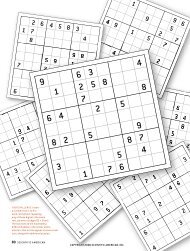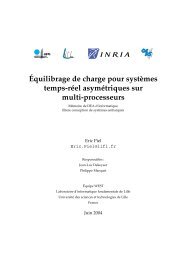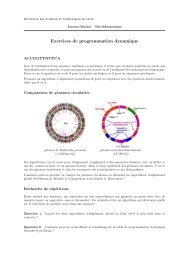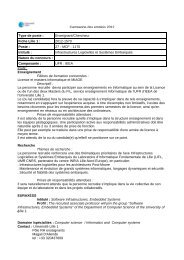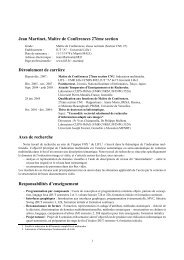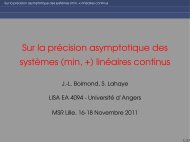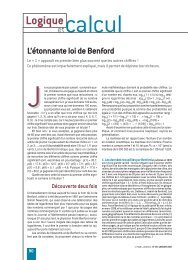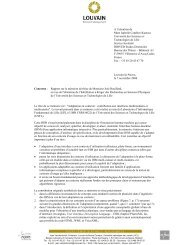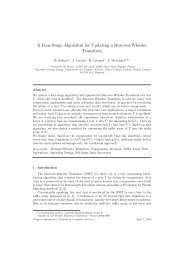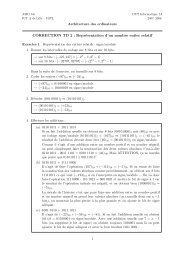Algorithmes de prediction et de recherche de multi-structures d'ARN
Algorithmes de prediction et de recherche de multi-structures d'ARN
Algorithmes de prediction et de recherche de multi-structures d'ARN
You also want an ePaper? Increase the reach of your titles
YUMPU automatically turns print PDFs into web optimized ePapers that Google loves.
26 Chapter 2. Defining RNA <strong>structures</strong> on base pairs and on helices<br />
Figure 2.1: Secondary structure of transfer RNA (tRNA) Ala, seen as a s<strong>et</strong> of base pairs (top) or as a s<strong>et</strong> of<br />
helices (bottom). Each rectangle shows a group of adjacent bases inclu<strong>de</strong>d in a helix. B<strong>et</strong>ween two rectangles<br />
belonging to the same helix a gras edge is appeared.<br />
A secondary structure on BP is a subs<strong>et</strong> of BP such that any two distinct base pairs of S are<br />
either nested or juxtaposed. Figure 2.2 gives an example of a secondary structure with 6 base<br />
pairs.<br />
In the rest of this thesis, a secondary structure is <strong>de</strong>composed into nested levels of juxtaposed<br />
base pairs. For this perspective, we <strong>de</strong>fine the two following notations:<br />
• Given a structure S, toplevel(S) is <strong>de</strong>fined as the s<strong>et</strong> of base pairs of S that are not<br />
nested in any base pair of S.<br />
• Given a base pair (x, y) in S, nested(x, y, S) is the s<strong>et</strong> of base pairs of S that are nested<br />
in (x, y), and that are not nested in any base pair nested in (x, y).<br />
These levels induce a partition of S:<br />
S = toplevel(S) ∪ �<br />
(x,y)∈S nested(x, y, S)<br />
For example, on the Figure 2.2, toplevel(S) = {(1, 6), (5, 10), (9, 14)}, nested(1, 6, S) =<br />
{(2, 4), (3, 5)}, nested(5, 10, S) = {(7, 8)}, nested(9, 14, S) = {(10, 11), (12, 13)}, and all other<br />
nested s<strong>et</strong>s are empty.<br />
It is routine to verify that S is a secondary structure if, and only if, any two base pairs of<br />
toplevel(S) are juxtaposed, and for each (x, y) of S, any two base pairs of nested(x, y, S) are<br />
juxtaposed.<br />
Finally, we also <strong>de</strong>fine intervals which are subs<strong>et</strong>s of the base pair s<strong>et</strong>. Given a s<strong>et</strong> BP of base<br />
pairs, BP[x..y] <strong>de</strong>notes the subs<strong>et</strong> of BP composed of base pairs (z, t) such that x ≤ z < t ≤ y.



